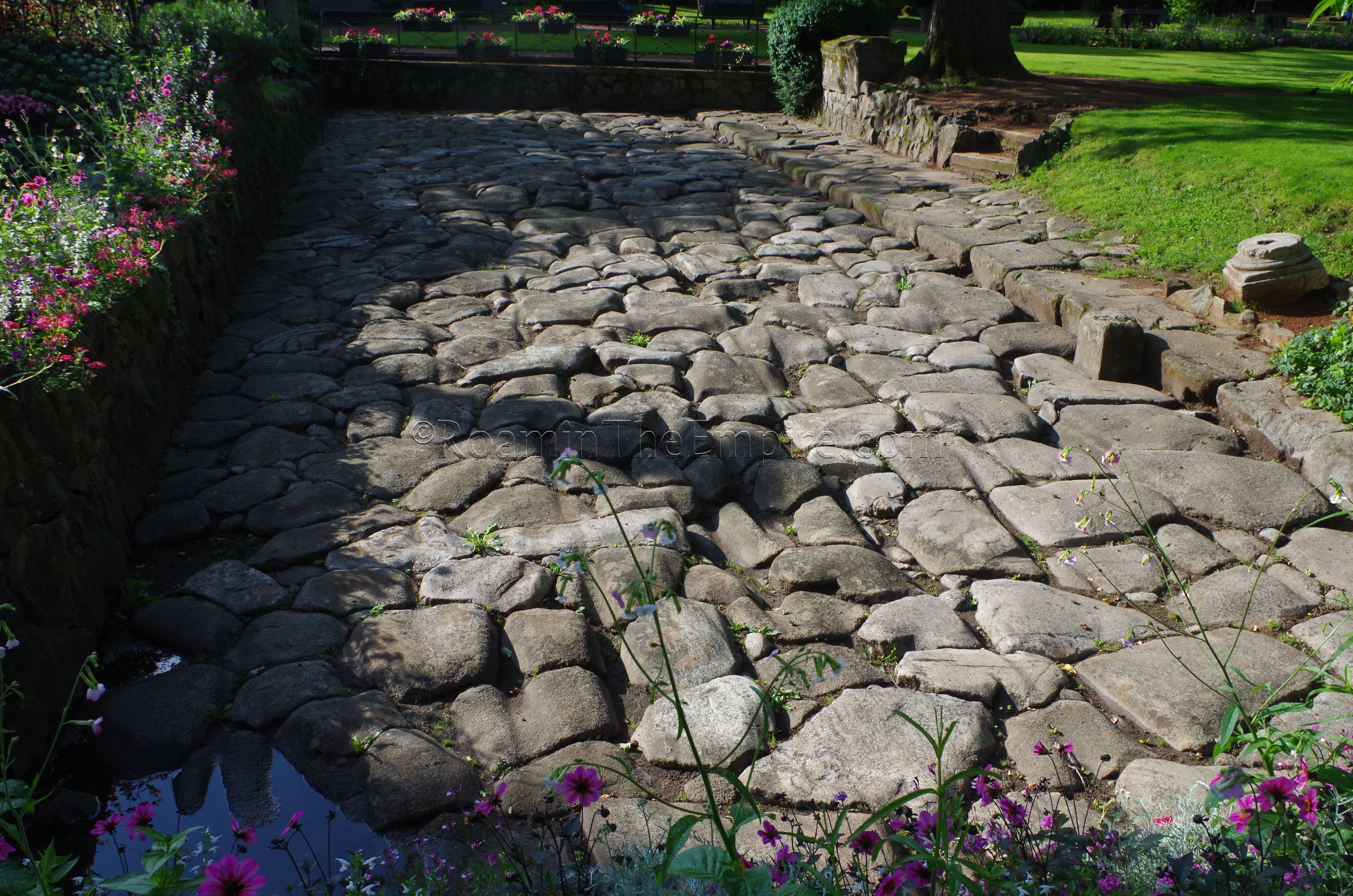
Most Recent Visit: June 2018
As early as at least the 4th century CE, the site of the Roman town of Vienna (not to be confused with modern Vienna, Austria, which was called Vindobona during the Roman period) was the location of an oppidum of the Allobroges tribe. The location of Vienna on the Rhône and near an important trade route between the Alps and the Loire Valley made it a center of trade for the Allobroges. Polybius and Livy both mention Hannibal as encountering the Allobroges in his march to Italy in 218 BCE, though Polybius describes a battle between the two, while Livy conveys a less confrontational meeting. In 122 BCE, the Allobroges came into conflict with Rome for giving refuge to the Salluvian leader Teutomalius, who was hostile to Rome and for attacking the Aediu people, who were friendly toward Rome. That year, the Allobreges were squarely defeated by the Roman consul Gnaeus Domitius Ahenobarbus. The following year, in 121 BCE, the consul Quintus Fabius Maximus fought another pitched battle with a combined force of the Allobroges and Arverni, perhaps numbering 200,000 men, dealing it a devastating defeat and bringing the area of the Allobroges under the hegemony of Rome. For the most part, the territory of the Allobroges operated largely autonomously and free of Roman influence, with the exception of Vienna, which served as an important trading hub for the Romans.
Sometime during the latter stages of the Cimbrian War, perhaps just prior to the disastrous Roman defeat at the Battle of Arausio in 105 BCE, Vienna seems to have suffered some kind of destruction at the hands of the migrating Cimbri and Tuetoni tribes, as evidenced by a destruction layer in the archaeological record. Vienne again suffered a destructive event around 61 BCE, when the Allobroges revolted against Rome and were subsequently defeated. Vienna was visited by Caesar during his Gallic campaigns in 58 BCE and 52 BCE, and shortly after he seems to have founded a colony of veterans there, giving the city the name Colonia Julia Viennensium. Vienna seems to have prospered following the Roman conquest of Gaul. The Allobroges, however, again revolted against Roman rule in 43 BCE, this time expelling the Roman citizens from Vienna (leading to the founding of nearby Lugdunum as a new home for the exiles) and resulting in the city losing its rights for a number of years, before they were restored under Augustus. In 40 CE, under Caligula, the city was once again made a colony with full rights and given the name Colonia Julia Augusta Florentia Vienna.
Vienna prospered in the early empire, but was largely overshadowed by the nearby Lugdunum, which had grown to be perhaps the most important city in Gaul. After the decline of Lugdunum following the devastating battle there in 197 CE, though, Vienna again seems to have grown in importance in the area, as well as in Gaul as a whole. It was apparently in Vienna in 260 CE that Postumus was proclaimed emperor by his troops, which would result in the separatist Gallic Empire until 274 CE. The following year, in 275 CE, Vienne seems to have suffered at the hands of Germanic invaders, though it would remain an important city through the following century. In the reorganization of the provinces under Diocletian and Maximian in the early 4th century, Vienna became the capital of the province of Viennensis. Around 468 CE, Vienna was captured by the Burgundians and became a relatively important site within the Burgundian territory.
Getting There
Vienne is a quick and easy trip by train from the major city of Lyon. The train takes between 15 and 30 minutes, depending on the train. There are departures from both of Lyon’s major train stations: Part Dieu and Jean Macé. Jean Macé, however, has more frequent departures. Departures from both stations run as low as 7.40 Euro each way. Departures are fairly frequent during the morning and evening commutes during, but there is at least one departure per hour from one, or both, of the stations outside of the commute times and on the weekends. The return departures from Vienne are on a similar schedule. It is recommended to check the SNCF site for exact departure and prices. In Vienne, the town is very walkable, with everything falling within about a 1 kilometer radius from the train station.
Roman Road and Wall
There are a number of vestiges of Vienna, as well as three museums, in the area of modern Vienne. Heading straight out from the train station down Cours Marc-Antoine Brillier, on the right side (east side) of the road, near the book store Passerelles (19 Cours Marc-Antoine Brillier) are a few small (and one large) sections of the Roman town wall. This section of the wall seems to date to the original wall erected around Vienna by Augustus in 16-15 BCE, which had a length of about 7.2 kilometers. A later wall was built in the late 3rd or early 4th century CE, following the Germanic invasion in 275 CE, that significantly reduced the area enclosed by walls (less than 2 kilometers total length). These parts of the wall are on the sidewalk outside businesses, so they are always visible and able to be visited. There is an informational sign with translations in English and German near one of the sections.
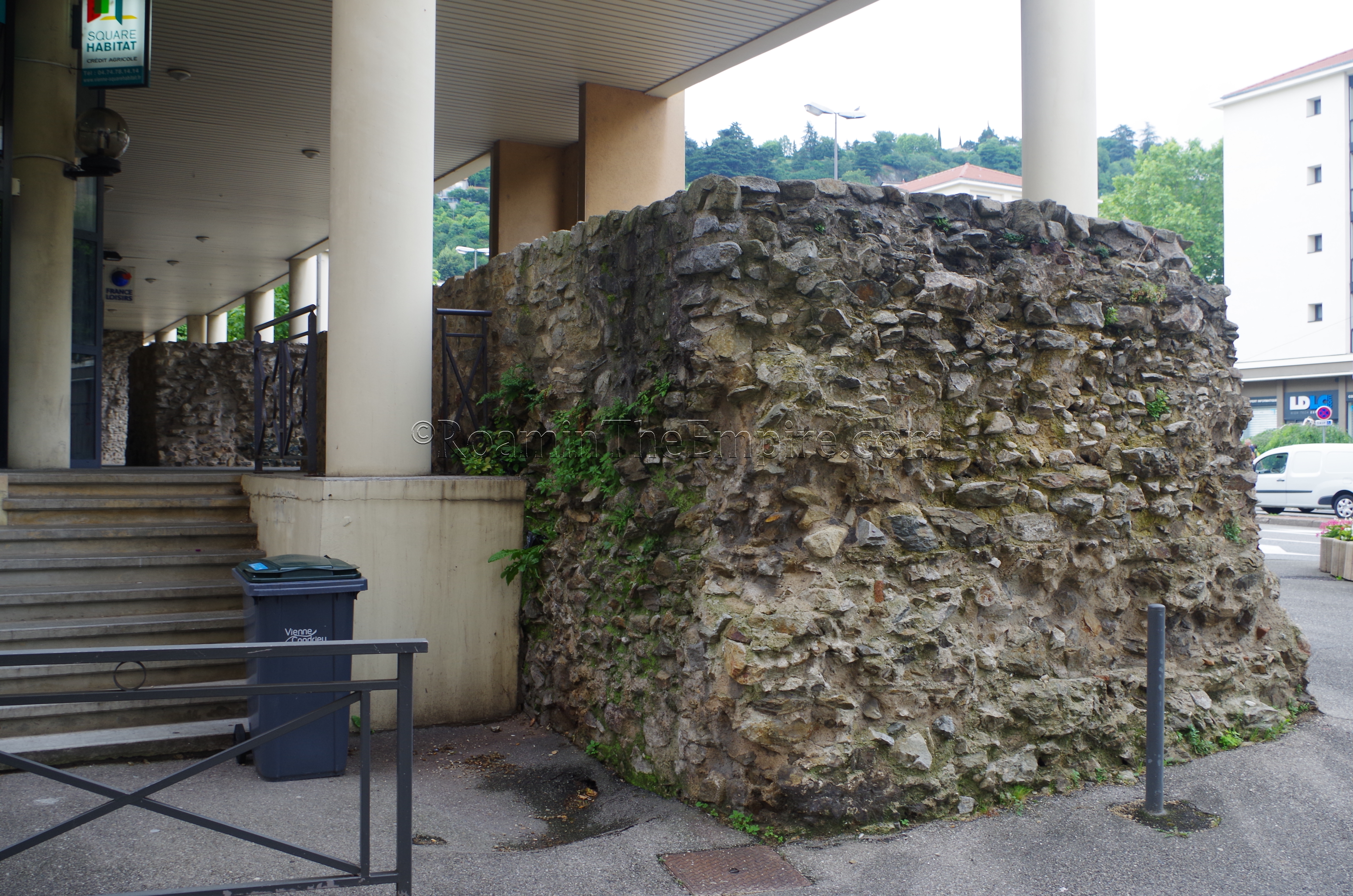
A little bit further down the street and across it is the entrance to the Jardin de Ville, a large city park. The park has a complicated system of opening times, but, it opens at 8:00 year round, and is open until at least 17:00 in the winter months and as late as 21:00 in the summer (exact schedule here). There is no admission for entrance to the park. Near the center of the park is the Voie Romaine, the Roman Way, which is a stretch of Roman road, complete with cart ruts worn into the paving stones. There is no informational sign here, but there is a stone sarcophagus and what appears to be a milestone also placed here. It’s unclear if either are in-situ (relatively speaking), or if the milestone is even authentic (the condition would lead me to believe it is a reconstruction).
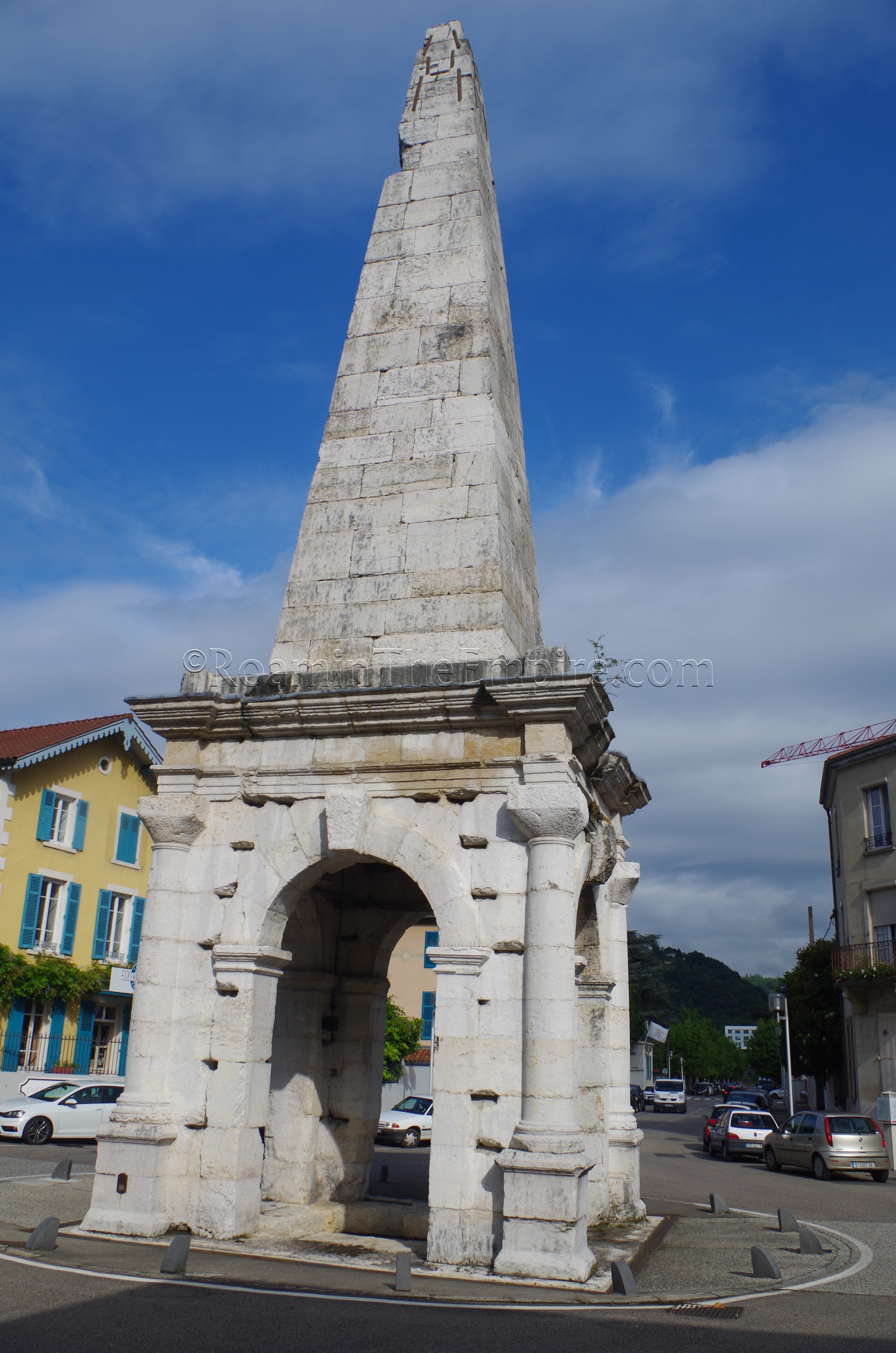
L’Aiguille
A bit further on, to the southwest, is l’Aiguille, the Needle. This monument is located in a roundabout, the Rond-Point de la Pyramide, on Boulevard Fernand Point. The names of both the monument and the roundabout refer to the unique sort of hybrid obelisk/pyramid form. The structure was originally thought to have been a funerary monument, legendarily attributed to an emperor or perhaps Pontius Pilate, who was thought to have been exiled to, and died in, Vienna. In reality, it seems to have been one of the monuments located in the spina of the city’s circus, which was built in the 2nd century CE. L’Aiguille, though, dates to sometime after the 275 CE Germanic invasion, after which the circus was reconstructed. The circus ran on a southeast-northeast axis for about 460 meters and was 118 meters wide. The capacity of the circus is estimated to have been about 15,000 spectators, and it seems to have fallen out of use in the 4th century CE.
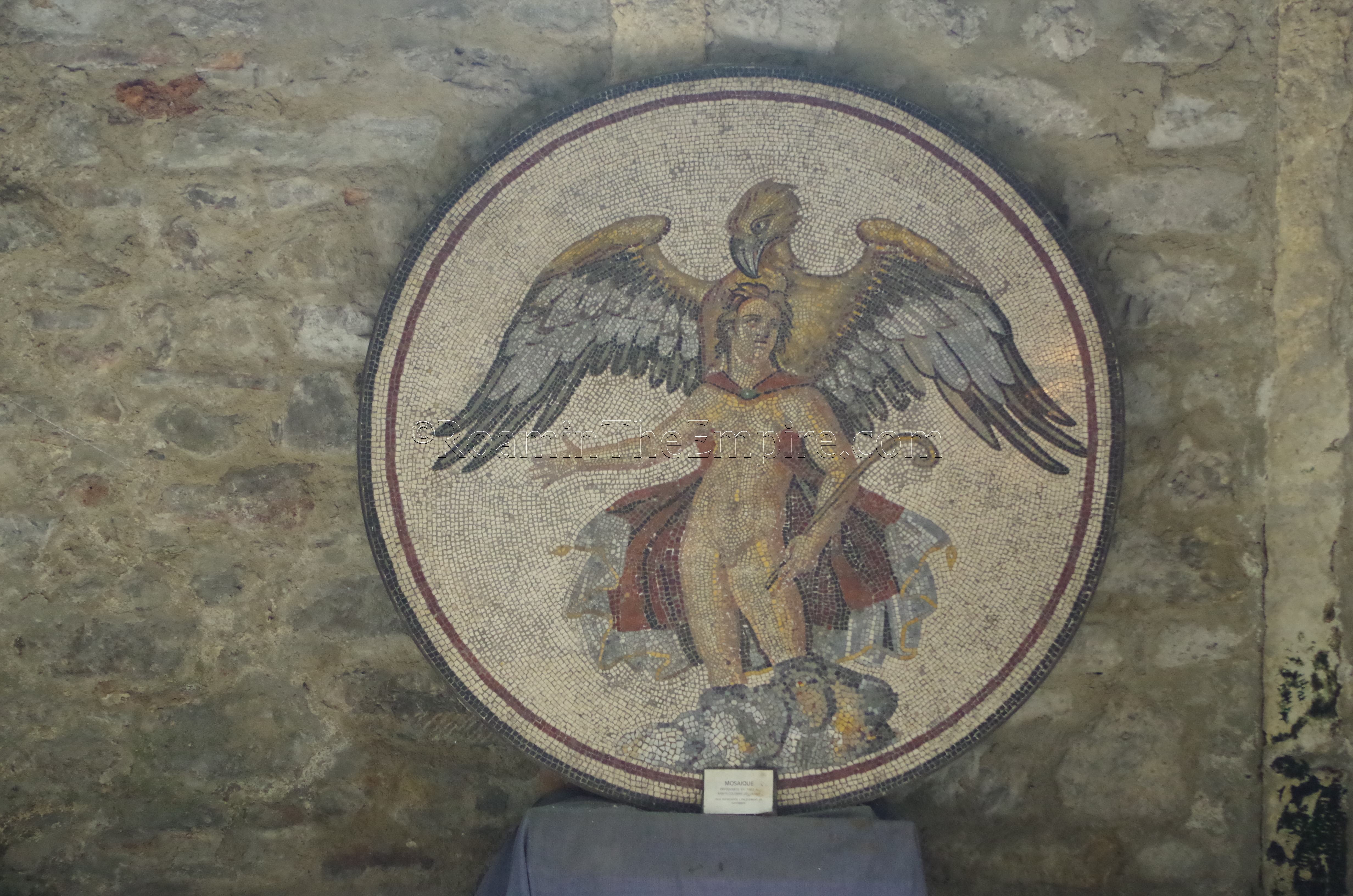
Musée Archéologique Saint-Pierre
Heading back towards the center of town is the first of the three museums in the area, the Musée Archéologique Saint-Pierre. Housed in the Église Saint-Pierre at Rue Saint-Georges 2, this museum serves as the lapidary for the town, with mostly inscriptions and larger fragmentary statuary. During the summer (April 1st to October 31st) it is open Tuesday through Sunday from 9:30 to 13:00 and from 14:00 to 18:00. The rest of the year it is open Tuesday through Friday from 9:30 to 12:30 and 14:00 to 17:00, and on Saturdays and Sundays from 13:30 to 17:30. It is closed on Mondays throughout the year. Admission to the museum is 3 Euros. There is also a combination ticket for all the museums and sites in Vienne and Saint-Romain-en-Gal, valid for 48 hours, for 8 Euros.
There are certainly some interesting pieces in the collection here; a few nice mosaics, some inscriptions associated with the Cybele cult, a bit of statuary, and other interesting inscriptions and reliefs. The church, however, has been used to house the collection since 1872, and it kind of shows. The presentation is a bit antiquated and a little haphazard (it seems things are largely just placed wherever there is room) and many pieces have no information associated with them. It is absolutely still worth visiting, particularly if you have a combination pass; just don’t necessarily expect a typical museum experience, or one like the other museums in town. The objects that do have informational cards are displayed solely in French. I spent about 45 minutes here, but I think most people would probably be through in about half an hour.
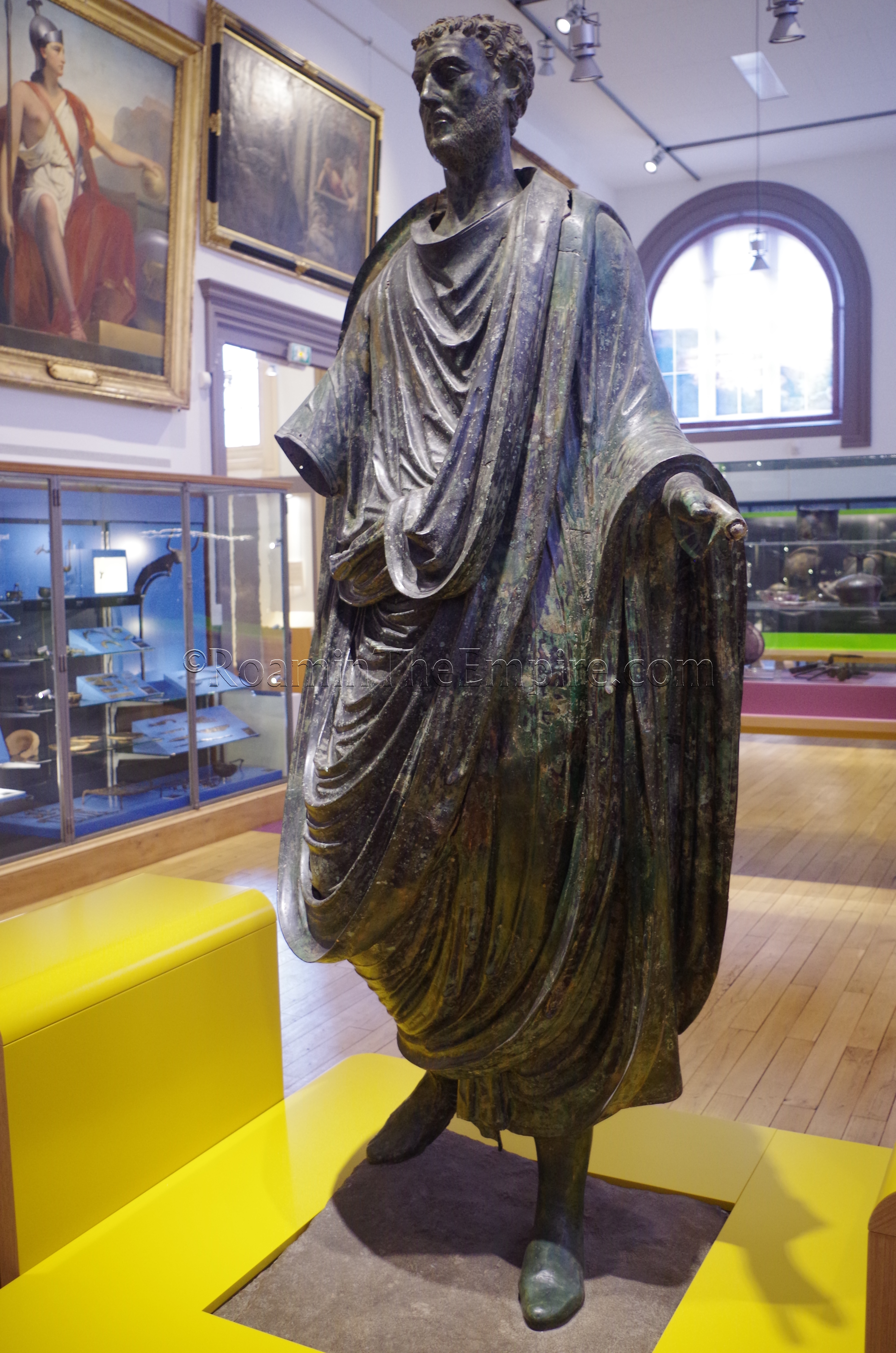
Musée des Beaux-Arts et d’Archéologie de Vienne
A five minute walk away at Place de Miremont is the Musée des Beaux-Arts et d’Archéologie de Vienne. The hours of operation and admission are the same as the Musée Archéologique Saint-Pierre. The collection at this museum is relatively small, but it’s packed with excellent artifacts. One of the centerpieces of the collection is a large bronze statue of Gaius Julius Pacatianus, an official who was born in Vienna in the late 2nd century CE. His career took him all over the empire, according to the remains of a bronze inscription that accompanied the statue, and is also displayed in the museum. A significant, ornately decorated silver hoard is also among the collection at the museum, which also includes a number of smaller day to day use items as well as a decent collection of small bronze statuettes and decorated lead water pipes and fixtures. Again, the museum is rather small, it took me about 45 minutes to get through and, like the other museum, none of the information on display is translated into any other language than French.
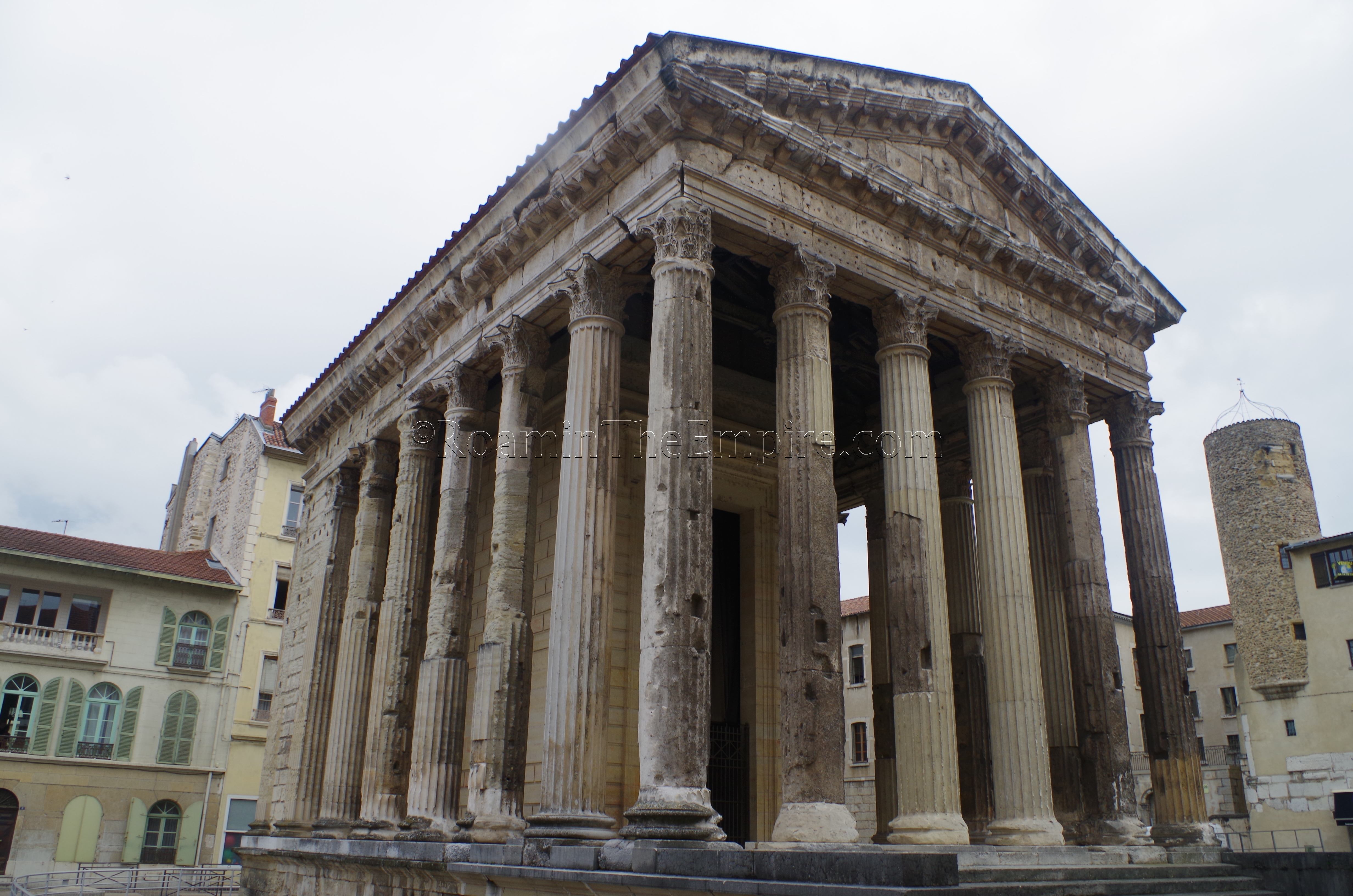
Temple of Augustus and Livia
A little further on past the museum, in the middle of Place du Palais Charles de Gaulle, is perhaps the most famous monument in Vienne, the Temple of Augustus and Livia. The temple seems to have originally been dedicated to Rome and Augustus during Augustus’ lifetime; perhaps as early as 27 BCE with a major renovation in 10 BCE. Under the reign of Claudius, however, it was rededicated to the Divine Augustus and Divine Livia in 41 CE. The fittings for the bronze letters of the dedication can be seen on the architrave at the front of the temple. Situated in the forum of Vienna, the temple owes its remarkable state of preservation to its conversion into a Christian church in the 5th century CE. There is no access to the interior of the temple, and it’s location in a public square makes it viewable at any time.
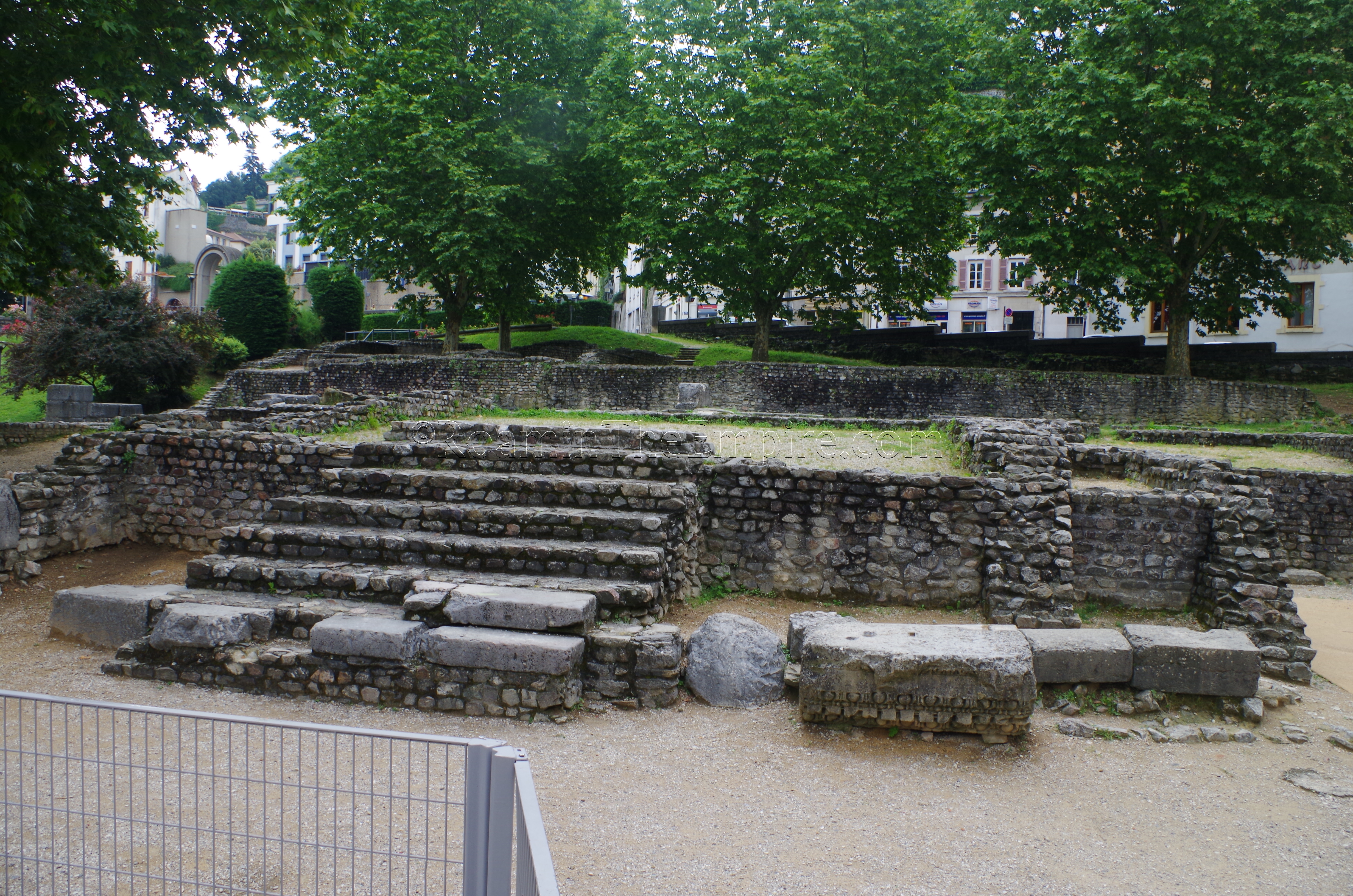
Jardin Archéologique de Cybèle
Not far from the temple, at Place Albert Vassy, is the Jardin Archéologique de Cybèle, a public park that contains remains from the forum, some baths, and a sanctuary dedicated to Cybele. Unfortunately, when I went, a significant portion (more than a third of the entire park) of the remains were in the process of being covered up in preparation for some kind of festival that was to be taking place there during the summer. The baths and part of the pavement and portico were among the remains that were not visible, or were very limited in visibility. Aside from those remains on the north side of the park, there are also a few very large walls that may have been associated with a portico or some sort of monumental staircase dating to the 2nd century CE. Immediately south of one of these robust walls are the foundations of what is believed to be a small theater associated with the cult of Cybele and dating to the 1st century CE.
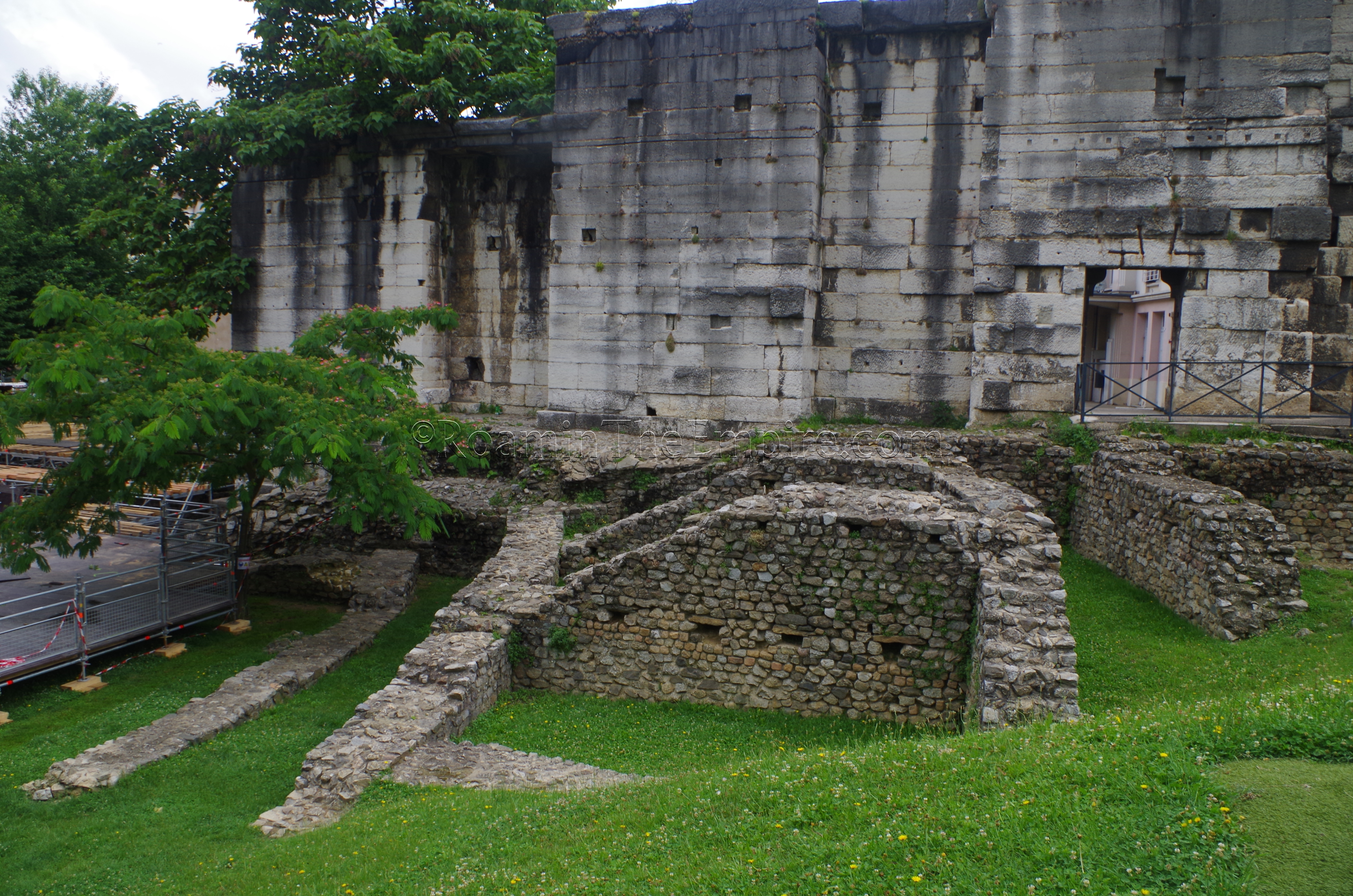
The southern part of the park is comprised of the actual temple and some connected and seemingly associated buildings. From the west, the podium of what is believed to be the temple is clearly visible with its staircase. Adjacent to these stairs on either side are shops. Behind the temple, there are a number of rooms that seem to be associated with bathing activities, possibly for rituals by adherents or for use by priests. In the extreme rear of this building, there were apparently remains of a domus, though the presences of these are not very readily discernible when visiting. The area is public and there is no fencing (aside from a small, unlocked fence used to delineate a playground in front of the temple) or restriction of access to the site, so it is able to be visited at any time. Though, again, a portion of it seems to be used for a festival in the summer months, which restricts access and viewing.
Sources:
Bromwich, James. The Roman Remains of Southern France: A Guidebook. London: Routledge, 1996.
King, Anthony. Roman Gaul and Germany. University of California Press, 1990.
Livy, Ab Urbe Condita, 21.31
Martial, Epigrams, 7.88.
Polybius, Historia, 3.49-50.
Stillwell, Richard, William L. MacDonald, and Marian Holland. McAllister. The Princeton Encyclopedia of Classical Sites. Princeton, NJ: Princeton U Press, 1976.
Strabo, Geographica, 4.1.11.


